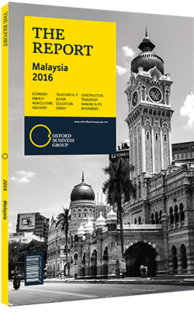Malaysia's oil and gas industry heads downstream
With major oil and gas deposits offshore, Sabah has long been a key part of Malaysia’s hydrocarbons industry – a major driver of the national economy. Indeed, since the first commercial discoveries were made offshore in the Sabah Delta Basin back in the early 1970s, oil and gas have made up a considerable slice of Sabah’s state revenues. This region, and the nearby Baram Delta Basin, is still proving lucrative, with discoveries continuing up to recent times. Examples include Murphy Oil’s 2002 discovery of the major, deep-water Kikeh oil field, and the discovery by Petronas Carigali, the exploration and production arm of Petronas, the Malaysian state oil and gas company, of gas reserves in the Limbayong field in 2014.
Now though, at a time of declining oil and gas prices worldwide, the revenues of both the sector and the state have been hit. Sabah’s oil and gas is sold by the national oil and gas company Petronas, which sends a percentage of the revenues it earns back to the state. In 2015 this was expected to be RM1.15bn ($284.7m) yet, with the decline in prices, only RM961.94m ($238.1m) was received. For 2016 some RM900m (222.8m) is now expected. Fortunately, however, Sabah has been investing for some time in its higher-value-added, downstream sector. Indeed, investments in a string of onshore petrochemical, and oil and gas centres, such as the Sabah Oil and Gas Terminal (SOGT) at Kimanis, and the Sipatang Oil and Gas Industrial Park (SOGIP), are positioning the state well to act as a future regional hub.
Upstream Resources
Petronas Carigali is highly active in the state. The company has exclusive rights to hydrocarbons exploitation in Malaysia, while also operating a series of production-sharing contracts with international majors. Shell, Murphy Oil and ConocoPhilips are some of the largest operating in Sabah.
According to the Malaysia Energy Information Hub in 2013, the year for which the most recent figures are available, total hydrocarbon reserves in Sabah stood at 1.9bn barrels of oil and 13.2trn standard cu feet (scf) of natural gas. Stand-outs in the offshore sector include Murphy Oil’s Block K of the Kikeh field, which produced some 28,200 barrels of oil equivalent per day (boepd) in 2015, and the deep-water Gumusut-Kakap field, where Shell and ConocoPhilips have deep-water operations. Shell’s side of the field is set to ramp up from 25,000 boepd in 2014 to 135,000 boepd at peak levels – around 25% of Malaysia’s entire production. The firm is also developing the Malikai field, which should deliver a further 60,000 boepd at peak, when drilling begins in earnest in 2016. For ConocoPhilips 2014 was a landmark year in Sabah, as production began at its Kebabangan Gas development. This, plus the company’s operations in Gumusut-Katap and the Siakap-North Petai field, is likely to add some 60,000 boepd to its output by 2017.
Linking Up
These offshore, upstream facilities are connected to rapidly evolving, onshore downstream operations. Kebabangan sends its gas via a pipeline to the SOGT. With 300,000 barrels of oil per day and 1.25bn scf per day in capacity, the SOGT is part of the Sabah-Sarawak Integrated Oil and Gas Project. As part of the project, gas is exported down the 512-km onshore gas pipeline to Bintulu in Sarawak. Some gas resources also go to SOGIP, where the $1.5bn Sabah Ammonia-Urea plant is set to begin commercial production in the third quarter of 2016. The plant will have a capacity of 1.2m tonnes per year of granular urea and 740,000 tonnes per year of liquid ammonia.
The Malaysian government has also been keen to stress the need for the state’s budding petrochemicals industry to further diversify its product range and also leverage Sabah’s strategic location to attract more oil and gas traders. Indeed, due to its location on the South China Sea, near several major shipping lanes, and with a growing domestic oil and gas industry, Sabah does seem well placed to take a greater share of regional trade in the years to come.
You have reached the limit of premium articles you can view for free.
Choose from the options below to purchase print or digital editions of our Reports. You can also purchase a website subscription giving you unlimited access to all of our Reports online for 12 months.
If you have already purchased this Report or have a website subscription, please login to continue.

